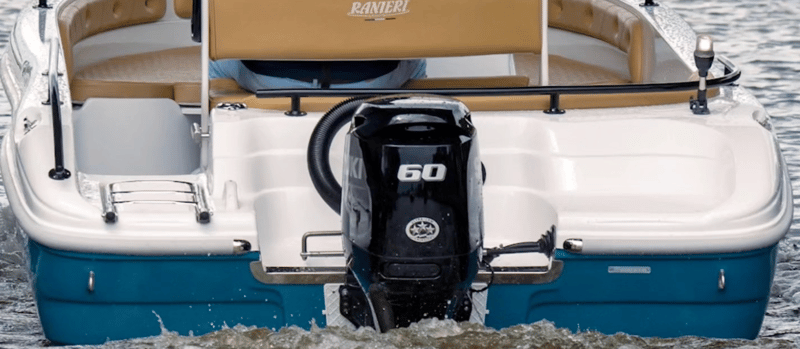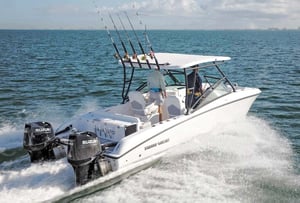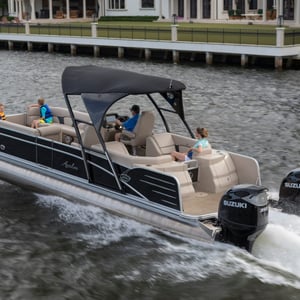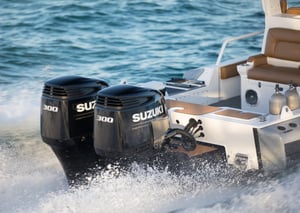
We recently celebrated World Mother Language Day, which made us revisit the importance of acknowledging that boating has a language of its own. This language is used internationally by skippers to communicate and understand each other.
Curious about the most used terminology on a boat? Look no further. We've compiled a comprehensive list for you.
All hands on deck! - This is used to call all crew members to assist with tasks or emergencies.
Cast off! - This is an instruction to release mooring lines and get ready to depart from the dock or mooring.
Port and Starboard- These refer to the left and right sides of the boat, respectively, as viewed from the stern (back) looking forward.
Hard to port/starboard- This is a command to turn the boat sharply to the left or right.
Full speed ahead- This is a directive to move the boat at maximum speed.
Man overboard! - This alarm indicates that someone has fallen into the water and requires immediate attention.
Secure the hatches- This is an instruction to close and secure all hatches and openings to prevent water from coming in.
Anchors aweigh- This is a command to hoist the anchor in preparation for departure.
Mayday - This distress call signals a life-threatening emergency requiring immediate assistance.
Standby to dock- This is preparation for approaching and mooring the boat to a dock.
Underway- This indicates that the boat is in motion and not at anchor or moored.
Buoy- This is a floating marker used for navigation or to indicate hazards.
Aye, aye, captain! - This is an acknowledgment of an order or command, indicating compliance.
Hard alee- This is a command to turn the boat away from the wind.
While these are the most commonly used phrases across the world, you will more commonly hear them spoken amongst commercial operators.
Recreational boaters must be familiar with these essential nautical terms.
Port, Starboard, Bow, Helm, Hull, Gunnel, Stern, Underway, Trim, Bilge Pump, Impeller, Docking, Mooring, PFD - Personal Floating device, Transom, and Cleat. Here is an explanation of what they mean:

Port
When facing towards the front of a boat, the left-hand side is known as the port side. This side of the boat may have a red sidelight located on it. An easy way to remember that port is on the left side of a ship is to count the number of letters in each word. Both "port" and "left" have four letters in them.
Starboard
When looking towards the front of the boat, the right-hand side is called the starboard side. A green sidelight is usually located on the starboard side.

Bow
The bow of a boat refers to the front-most part of its hull. If the boat has an open bow, it usually has seating arrangements in this area. On the other hand, if the bow is closed, there is likely a cabin.
Helm
The helm of a boat is where the steering wheel and controls are located for the captain to operate.
Hull
The hull is the lower part of a boat that rests partially in the water. In South Africa, we usually find two types of hulls: V hull or Cat hull. On a pontoon boat, the hull comprises of pontoons and a frame that support the sides and floor.
Gunnel
This is the topmost edge of a boat's hull where it joins the deck.

Stern
The stern of a boat is the rear end where there may be seating, a swim platform, a ladder, and where the engine is located.
Bilge Pump
Recreational boats usually come equipped with a bilge pump integrated into the hull, which can accumulate water. The bilge pump may work automatically when it detects water, or it may require manual activation with a switch at the helm. The purpose of the bilge pump is to remove any stagnant water from the compartment where it is located. This is crucial for maintaining the boat's buoyancy.
Trim
"To trim the motor" refers to the process of adjusting the motor's position by moving it up or down. You can easily accomplish this by using a button located on the throttle of your boat. This button typically has up and down arrows and is positioned for easy access by your right thumb while your hand remains on the throttle.
Underway
A boat is considered underway if it is not at a dock or anchored, and is either floating, drifting, or using its motor to move.

Transom
The transom, which is located on the stern of the boat. This is where the outboards are attached to the boat.
Cleat
There are two places where you can find a cleat: on the boat or on the dock. A cleat is a metal fastener that is used to tie a dock line or an anchor line.
Impeller
The impeller is a crucial component found in all motors, responsible for ensuring their proper functionality. In particular, the water pump impeller, typically made of rubber, can be found within the engine's lower unit. Its primary function is to pump water up into the engine to keep it cool, and then discharge it back out.
PFD
PFD is short for Personal Flotation Device and refers to any type of flotation device used for safety purposes.
Mooring
A mooring is a permanent structure to which a boat can be secured. Examples include wharfs, jetties, piers, anchor buoys, and mooring buoys.
Docking
Docking involves approaching the dock parallelly and securing the boat using ropes and nautical knots.
We are delighted to have assisted you in learning the common terms of boating language.
Happy Boating!
